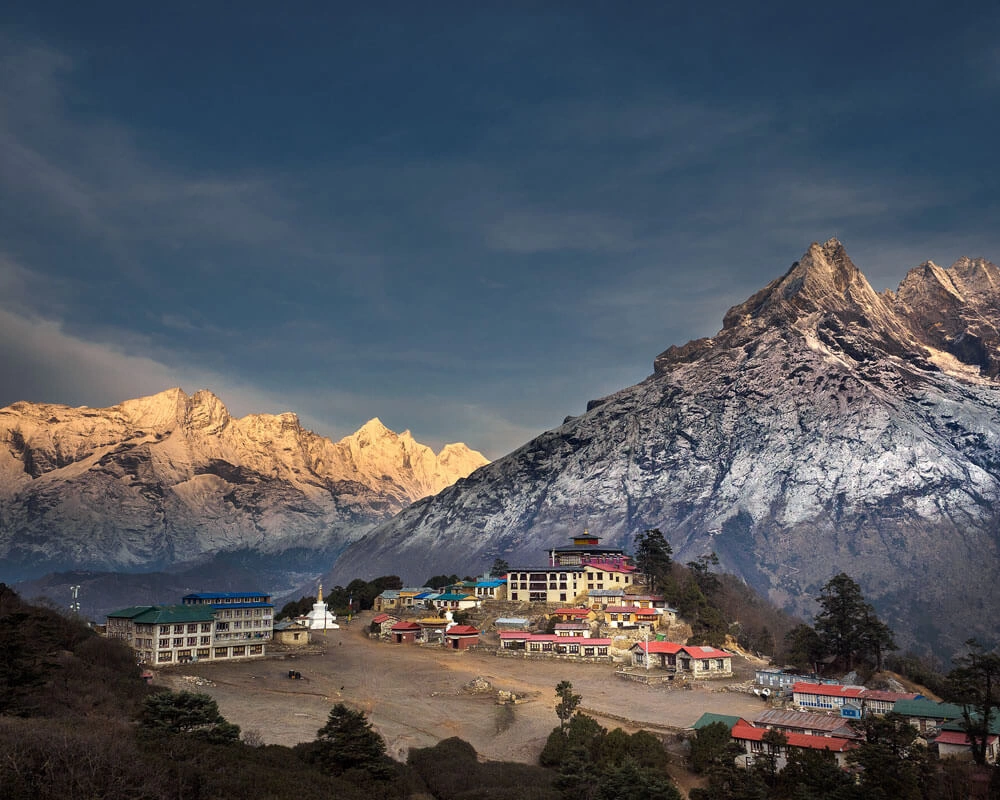
Introduction to Base Camp Trek Photography
The Ultimate Base Camp Trek Photography Guide is your key to unlocking the breathtaking vistas and rich cultural tapestry of Nepal’s iconic Everest region. As we embark on this photographic journey, we’ll explore the essential techniques, gear, and insights needed to capture the magic of the world’s highest mountain and its surroundings. Our guide is designed to help both amateur and professional photographers make the most of this once-in-a-lifetime experience, ensuring that your memories of the Ultimate Base Camp Trek are preserved in stunning detail.
Preparing for Your Ultimate Base Camp Trek Photography Adventure
Before setting out on the Everest base camp private trek, proper preparation is key to photographic success. We recommend investing in a lightweight yet sturdy camera body that can withstand the rigors of high-altitude trekking. A versatile zoom lens covering wide-angle to moderate telephoto ranges (e.g., 24-70mm) will serve you well in most situations. Don’t forget to pack extra batteries and memory cards, as cold temperatures can drain power quickly, and you’ll want ample storage for the countless photo opportunities that await.
Additionally, a sturdy tripod is essential for low-light situations and capturing the mesmerizing star-filled skies of the Himalayas. To protect your gear from dust and moisture, we suggest using weather-sealed camera bags and lens filters. As part of your Ultimate Base Camp Trek photography kit, include a remote shutter release for shake-free long exposures and a lens cleaning kit to maintain optimal image quality throughout your journey.
Mastering Composition on the Ultimate Base Camp Trek
The Private Everest base camp trek offers a plethora of awe-inspiring landscapes and cultural scenes to photograph. To elevate your images, we encourage you to focus on strong compositional techniques. Utilize the rule of thirds to create balanced and engaging shots of the towering Himalayan peaks. Incorporate leading lines, such as winding trails or prayer flag strings, to guide the viewer’s eye through your photographs.
When capturing the grandeur of Mount Everest and its neighboring giants, experiment with scale by including trekkers, yaks, or local structures in the foreground. This technique not only adds depth to your images but also emphasizes the sheer magnitude of the mountains. As you progress along the Ultimate Base Camp Trek, be on the lookout for natural frames, such as rock formations or monastery doorways, to add context and interest to your compositions.
Lighting Techniques for Stunning Ultimate Base Camp Trek Photos
Mastering light is crucial for creating captivating images on the Ultimate Base Camp Trek. The golden hours of sunrise and sunset offer warm, soft light that beautifully illuminates the snow-capped peaks and bathes the landscapes in ethereal hues. We recommend rising early to capture the first light on Everest from vantage points like Kala Patthar, where the interplay of light and shadow creates a breathtaking spectacle.
During midday, when harsh sunlight can create challenging conditions, focus on capturing the vibrant culture of Sherpa villages or the intricate details of Buddhist monasteries. Overcast days provide excellent opportunities for even, diffused light, perfect for photographing portraits of local people or the lush rhododendron forests in the lower regions of the trek.
Capturing Culture and Wildlife on the Ultimate Base Camp Trek
The Ultimate Base Camp Trek is not just about landscapes; it’s also a journey through rich Sherpa culture and diverse Himalayan ecosystems. When photographing local people, always ask for permission and approach with respect and genuine interest. Candid shots of daily life, from yak herders to monks in colorful robes, can provide powerful storytelling elements to your photographic narrative.
Wildlife enthusiasts will find plenty of subjects along the Ultimate Base Camp Trek. Keep your telephoto lens ready for opportunities to photograph elusive species like the snow leopard, Himalayan tahr, or the majestic Danphe (Himalayan monal). Patience and a keen eye are essential, as many animals blend seamlessly with their rocky habitats.
Sharing Your Ultimate Base Camp Trek Photography
After your trek, sharing your photographs is a wonderful way to relive your experiences and inspire others. Consider creating a photo book or online gallery to showcase your Ultimate Base Camp Trek journey. Social media platforms can be excellent for sharing your work with a wider audience, but remember to use appropriate hashtags and give context to your images.
Conclusion: Capturing the Essence of Your Ultimate Base Camp Trek
As we wrap up our Ultimate Base Camp Trek Photography Guide, we want to emphasize the transformative power of this incredible journey. Photography is not just about capturing images; it’s about preserving memories, sharing experiences, and telling stories that can inspire and move others. The Ultimate Base Camp Trek offers a unique canvas for photographers, blending natural grandeur with rich cultural heritage.
